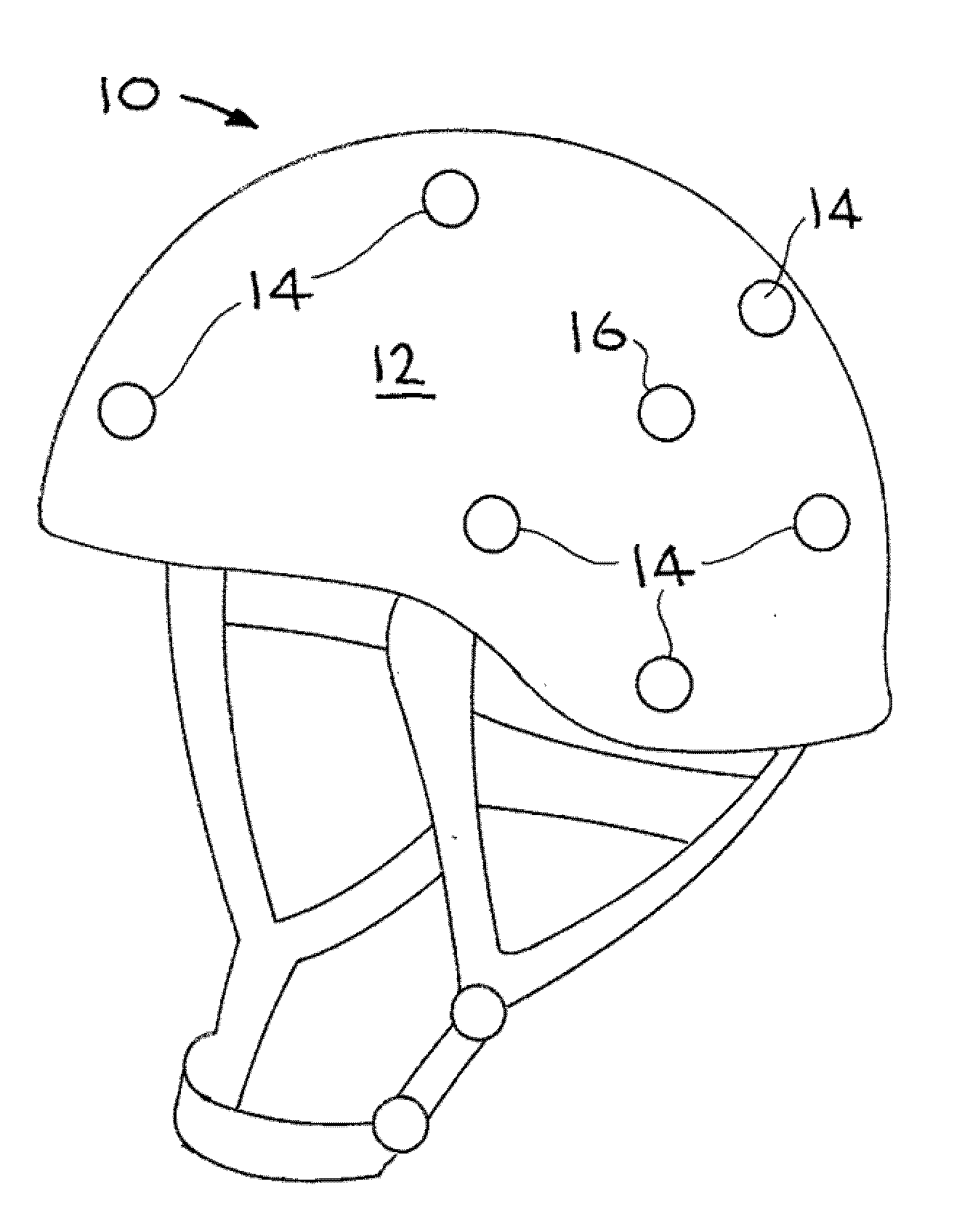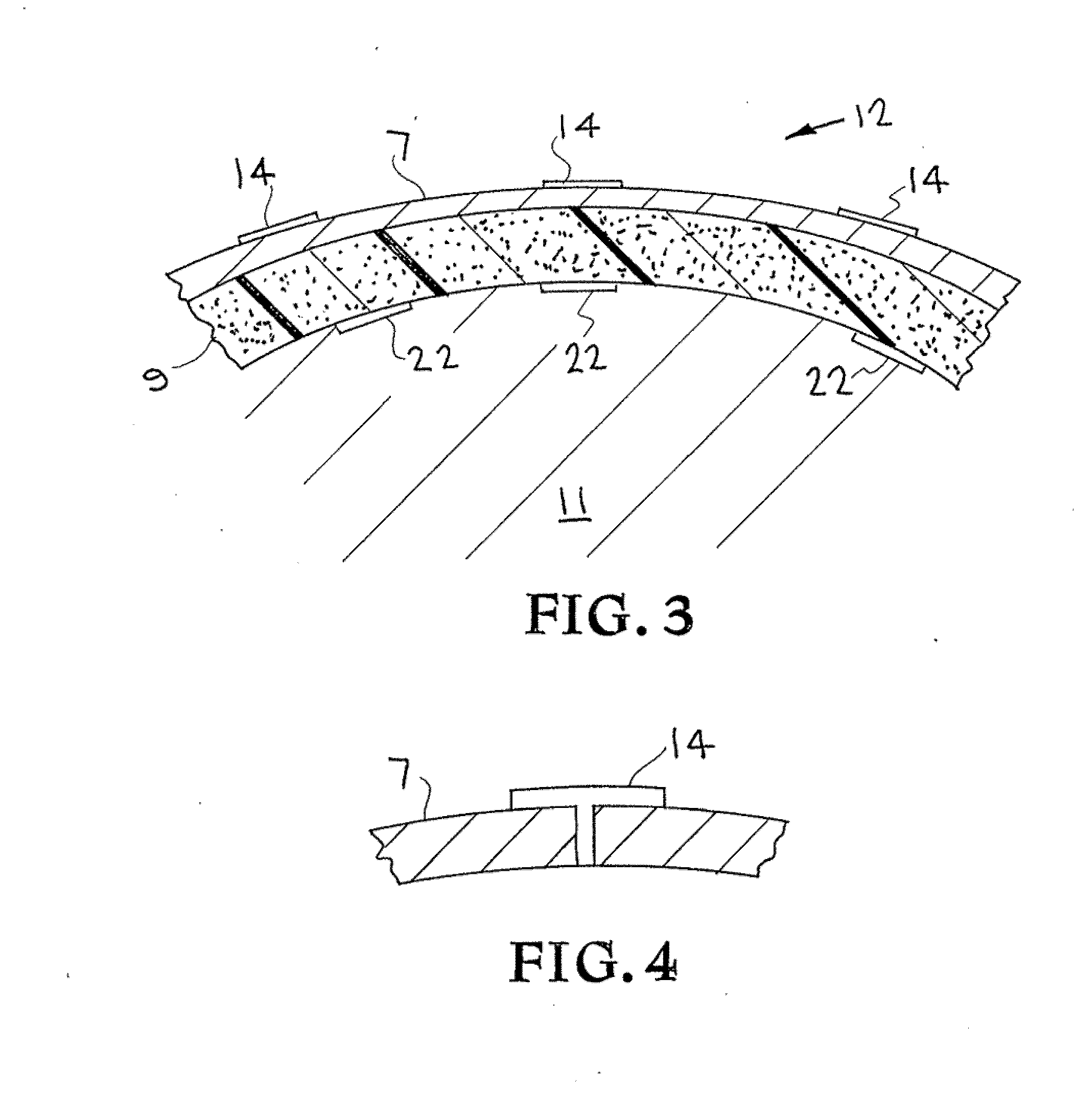Helmet blastometer
a blastometer and helmet technology, applied in helmet covers, protective garments, instruments, etc., can solve the problems of more severe biological damage due to blast waves, difficult diagnosis of injuries, and difficult diagnosis of serious injuries
- Summary
- Abstract
- Description
- Claims
- Application Information
AI Technical Summary
Benefits of technology
Problems solved by technology
Method used
Image
Examples
Embodiment Construction
[0030]Turning now to the drawings, FIG. 1 shows a first exemplary embodiment of the helmet blastometer of the present invention, generally indicated at reference character 10. The helmet blastometer 10 is shown having three main components, a helmet 12, a set of external sensors 14 connected to the helmet and capable of sensing pressure changes in a blast environment external to the helmet so as to characterize the blast environment, and a receiver (not shown in FIG. 1, see 58 in FIG. 7) which includes the electronics for receiving the signals produced by the external sensors. In addition, the receiver may also include electronics for storing, processing, and analyzing the received signals, as well as for controlling / powering system operations, and remote communicating with offboard systems if necessary. Also shown in FIG. 1 is a biTBI warning indicator 16, which may be any type of warning indicator including, a visual indicator (e.g., color based),.an aural indicator (e.g., sound a...
PUM
| Property | Measurement | Unit |
|---|---|---|
| external pressure | aaaaa | aaaaa |
| threshold pressure | aaaaa | aaaaa |
| pressure | aaaaa | aaaaa |
Abstract
Description
Claims
Application Information
 Login to View More
Login to View More - R&D
- Intellectual Property
- Life Sciences
- Materials
- Tech Scout
- Unparalleled Data Quality
- Higher Quality Content
- 60% Fewer Hallucinations
Browse by: Latest US Patents, China's latest patents, Technical Efficacy Thesaurus, Application Domain, Technology Topic, Popular Technical Reports.
© 2025 PatSnap. All rights reserved.Legal|Privacy policy|Modern Slavery Act Transparency Statement|Sitemap|About US| Contact US: help@patsnap.com



